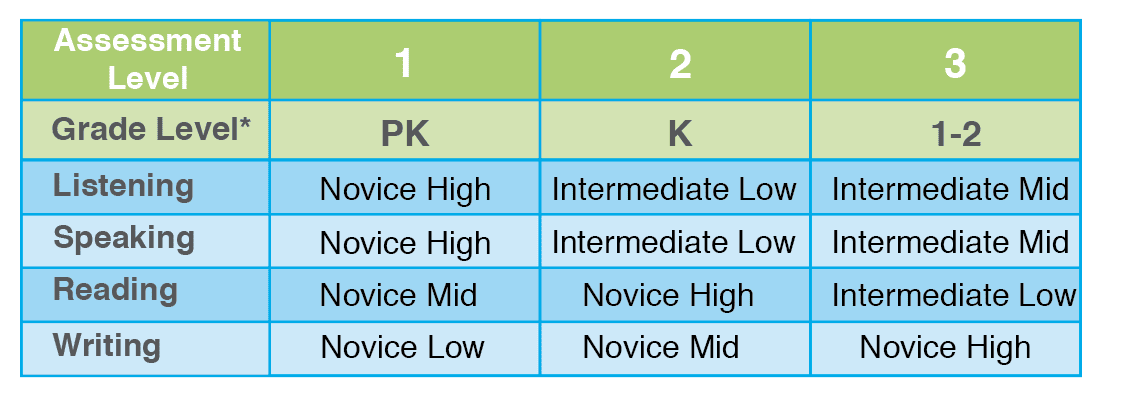Research shows that when bilingual children are provided optimal environments for learning both languages, they are able to develop sizable and deep vocabularies in both languages.
In order to create these optimal environments, it is important to perform accurate assessments in both languages to determine what children know when they begin the school year. Using assessment data, schools can create personalized plans that address the specific gaps of knowledge in both languages and monitor how students are progressing towards their learning goals. It is extremely important to accurately assess ELL and DLL students, as many are misdiagnosed with a learning disability, simply because they cannot express their knowledge in the target language. Little Sponges® offers three types of assessments: diagnostic, formative, and summative. We recommend conducting diagnostic assessment at the beginning of the school term, formative assessments (that are presented as interactive games and quizzes in each learning unit) during the school year and summative assessments at the end of the school term.
The Little Sponges® diagnostic and formative assessments (see below) are age appropriate and leverage colorful, real-life images, audio and print to assess students knowledge in their first and second language. These multimedia assessments enable children to go through the assessment on their own and ensure consistency in testing regardless of who administers the assessment. Teachers and/or parents should supervise children while they take the assessment. It is recommended that young students use touch-screen devices. Students in kindergarten and higher grades can take the assessment on their own. This enables teachers to save time by administering the assessment to all students in the class at the same time. Test scores are provided immediately after the student finishes the assessment giving teacher the score representing the percent of questions each student answered correctly. Little Sponges Gradebook stores and displays assessment and quiz data allowing teachers to see and sort scores for their students.
Each language track offers 3 assessment levels:
Level 1 Assessment is designed for children in preschool and Pre-K, but can be utilized by older students who are just beginning to learn one of the target languages. The 25 questions in this assessment focus on comprehension and letter recognition, testing children’s early language and literacy skills.
Level 2 Assessment is comprised of 30 questions and designed for students in K and higher grades. It assesses students’ understanding of vocabulary and academic topics as well as literacy. Students listen to audio questions and answer them by drawing on their knowledge of academic concepts and vocabulary. Students also answer literacy questions by reading words and phrases and matching them to correct visuals.
Level 3 Assessment is comprised of 40 questions and designed for students in first and second grade who have been learning two languages for at least 2-3 years. It assesses children’s ability to read in the target language and tests their comprehension of age appropriate academic content and vocabulary.
Students who complete the Little Sponges® program are expected to score 90-100% on age appropriate assessment at the end of the school year in both languages. The table below shows how Little Sponges® post-assessment level correlates with ACTFL proficiency levels. Students who score above 90% on the Little Sponges® post-assessment are expected to perform at the ACTFL level specified in the table below. For more details about ACTFL Proficiency Guidelines, please visit this website.
To access Little Sponges assessments, login and click on the assessment icon on the Adventure Map.

